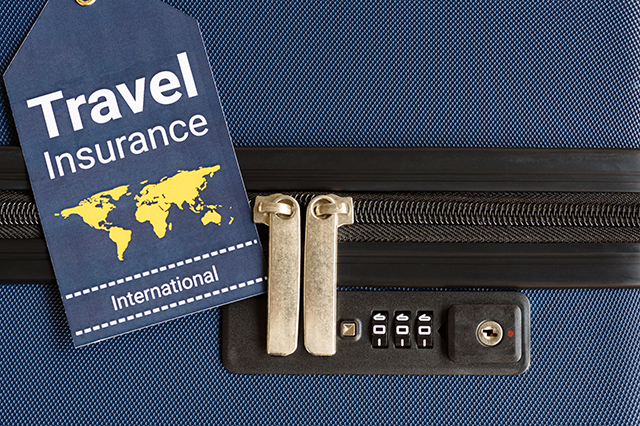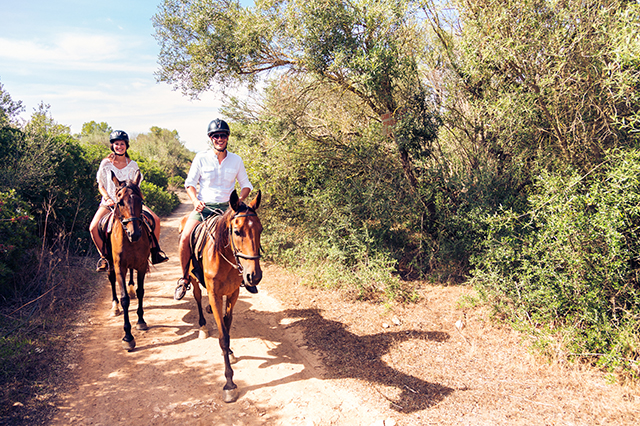For some travelers, adventure can be had at a world-class museum or an off-the-beaten-track bazaar. But if you prefer to get your thrills in more physical fashion – “dune bashing” in Dubai or paragliding in the Swiss Alps – you’re probably the kind of person who should find out what adventure travel insurance is, and what it does (or doesn’t) cover.
And what about less risky but still physically active trips? Do you need it for horseback riding in Reykjavik? Or biking gentle hills in the Côte d’Or? Do trips like those require special travel insurance services?
The best time to figure it all out is before you run into something unexpected on your travels. Not even the least risk-averse among us wants to feel heart-pounding excitement waiting to hear whether or not a claim will be covered.
What’s considered “adventure travel”?
This might actually surprise you: According to Allianz, a world leader in the travel insurance industry, adventure travel isn’t all about “physical pursuits in risky locations.”
In fact, 90 percent of adventure travel is considered “soft travel,” which includes such pursuits as walking, kayaking and yes, horseback riding. The name ‘adventure travel’ is often misunderstood, say the experts at Allianz. They like the definition offered up by the Adventure Travel Trade Association, which states that to be considered adventure travel, an activity must contain three ingredients: physical activity, a connection to nature and an immersive cultural experience.
What this means is that not all adventure travel requires special insurance services; if you’ve got travel medical insurance and you hurt yourself on a fishing boat in Cape Town, you’re probably covered.

When might you need adventure travel insurance?
If you’re traveling abroad, you probably already know that you should have trip insurance (for flight delays and cancellations, trip interruption, lost luggage and the like) and that travel medical insurance (also known as travel health insurance) is a must. Should you need medical care overseas, your own health insurance will cover some, but not all billed items, and very rarely covers medical evacuation, which can run between $50,000 and $100,000.
But will that travel medical insurance cover the more physical, risky or high-contact sports and other activities you might be planning to engage in? Most likely not. “All travel insurance plans specifically list adventurous (some call them ‘hazardous’) activities as specifically excluded from coverage,” writes travel expert Damian Tysdal in his blog Travel Insurance Review. And not all “adventure travel” insurance will necessarily cover your preferred adventure: “If the activity a traveler is participating in is not listed in the policy as covered, it’s not covered,” he said, noting that some plans are very limited in the number of sports and activities they will cover.
How to ensure that you’re covered
There’s really only one way to ensure that you’re covered to your satisfaction: You have to read the fine print.
There are plenty of ways to get to this point—from asking friends who’ve done it before to online research (travel insurance + your activities)—but even when you’ve narrowed down your search, you’ll want to ask questions—and make sure you can locate the answer on the policy before you sign off.
You can avoid disappointment (or financial distress) by avoiding a few common missteps:
- Even if your sport or activity is covered, there may be restrictions, rules, special conditions, exclusions… (You get the picture.) Some may only cover you if you’re a member in good standing of a sport’s governing body, or if you have specific certifications.
- How closely do you have to read the fine print? Really closely. You’ll find the language in these kinds of policies can be extremely detailed, as in “mountain climbing up to 4,572 meters (15,000 feet),” and “scuba diving, if PADI or NAUI certified.”
- Keep in mind that even if you’re certain everything you want to do is covered, you will be denied coverage if you sustain an injury while under the influence of drugs or alcohol. And if you have any pre-existing conditions, you must make them known beforehand, or all bets are off.
- If, once on your trip, you discover there’s some other cool adventures you want to try…. Check your policy before you go. It may very well be that this is the only opportunity you’ll ever have to go bungee jumping with your friends in Brazil again, but if you can’t afford to pay for potential out-of-pocket medical expenses, the time to discover it’s not covered is before you make the jump.
Are you an experienced adventure traveler? Do you have any tips or hard-won insights on adventure travel insurance or other insurance services for this type of trip? Share your stories and personal advice in the comments section below.
For all things travel-related, go to AAA.com/Travel.














